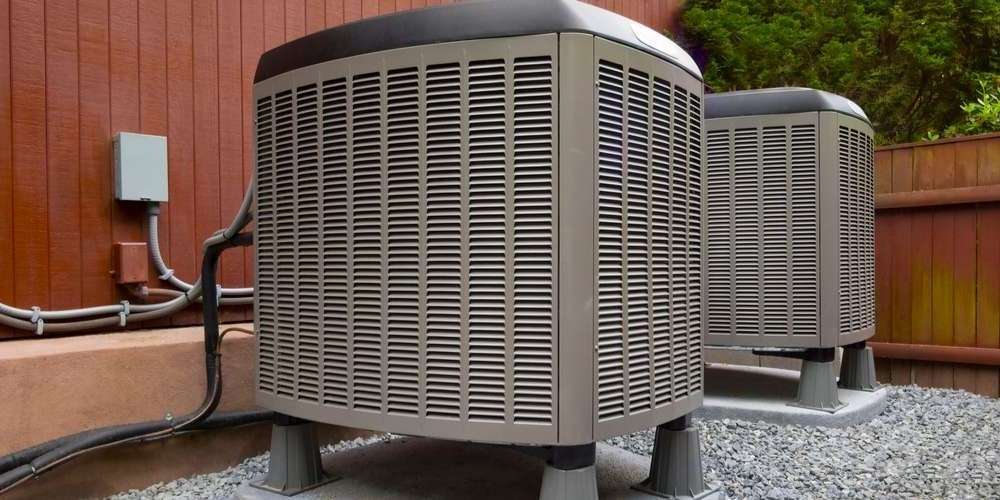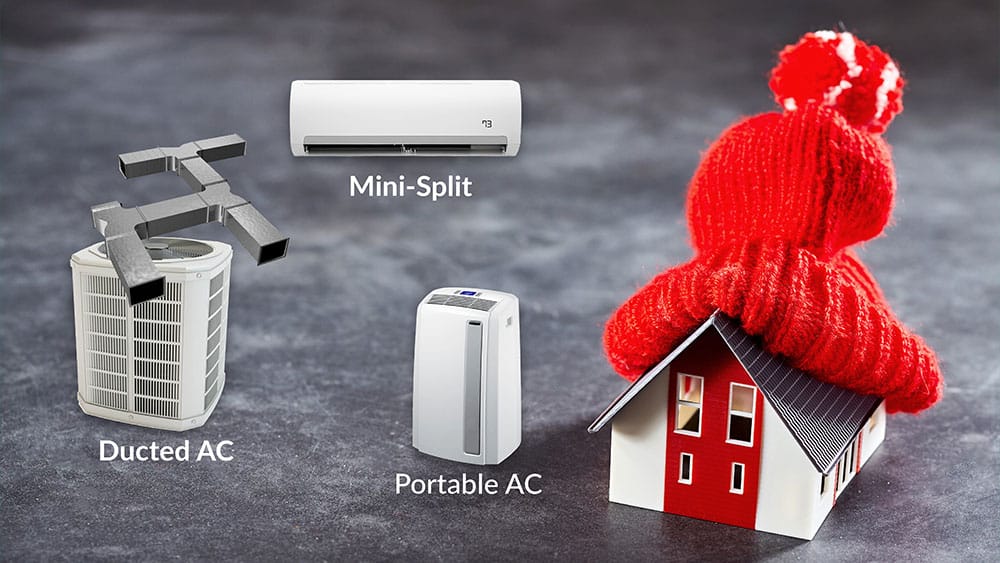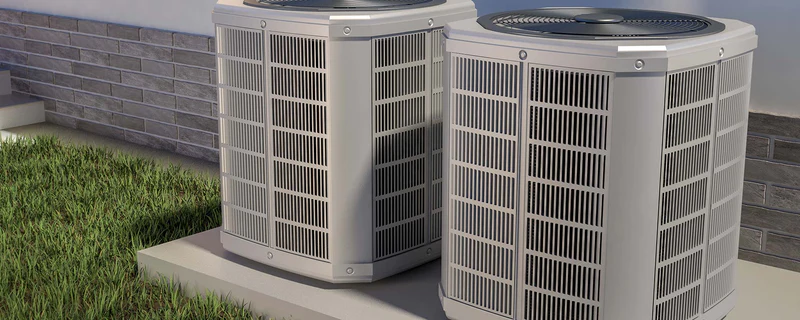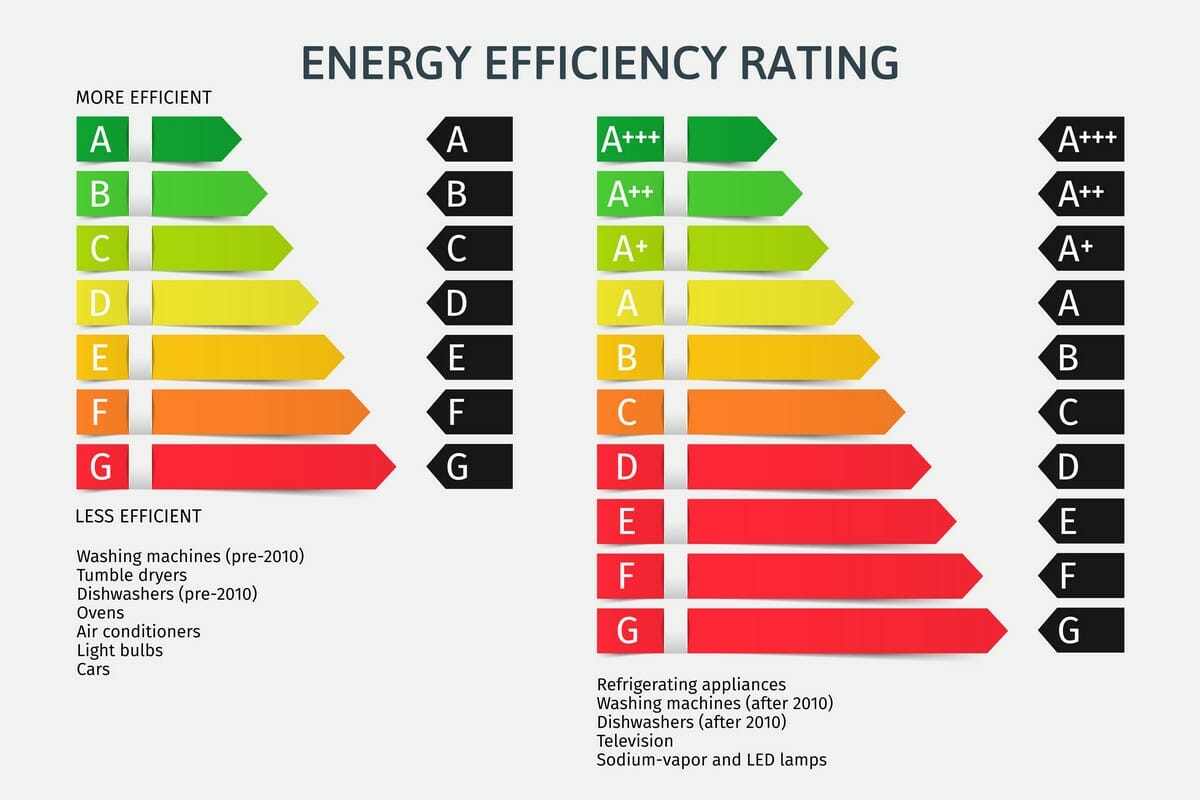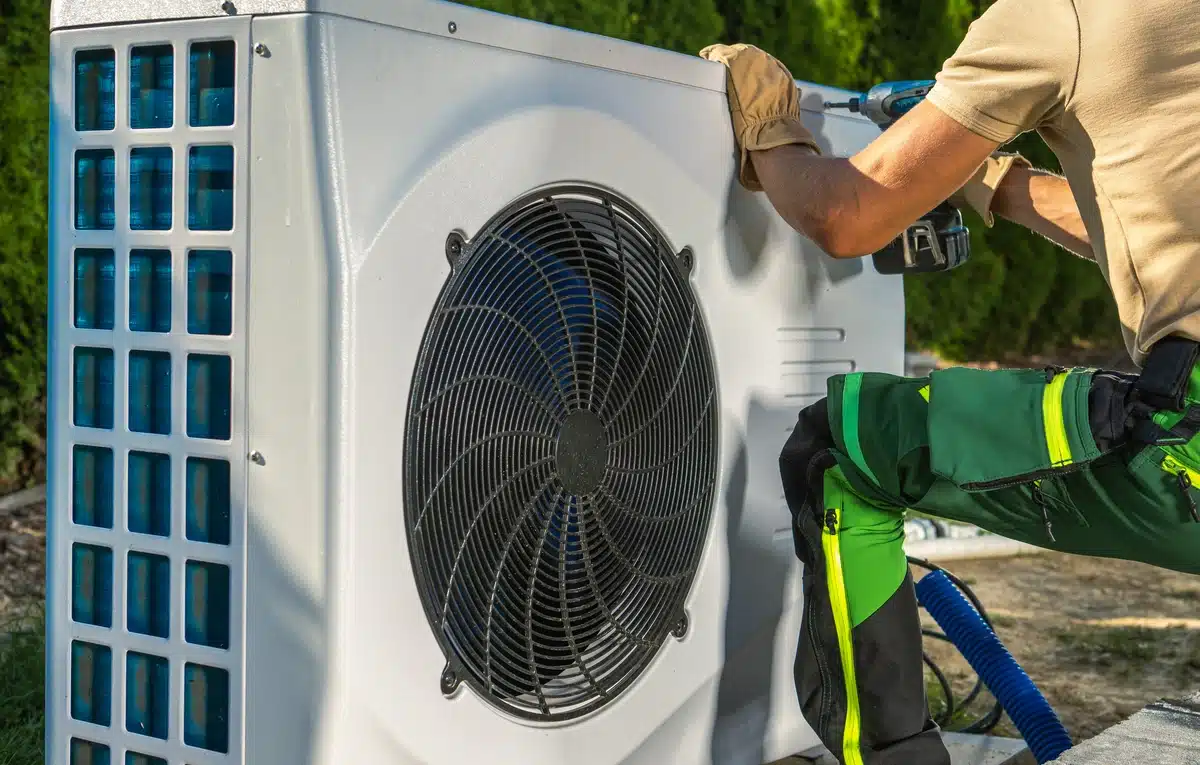As winter’s icy grip takes hold, ensuring your heat pump is working at its best isn’t just a luxury—it’s a necessity. No one wants a system that guzzles power without keeping the cold at bay. That’s where we come in. We’ll guide you through the inner workings of your heat pump, unraveling the secrets to peak performance. From the basic mechanics to top efficiency hacks, prepare to embark on a journey that promises a warm and cost-effective sanctuary. So, buckle up and get ready to explore the intriguing world of heat pumps, where comfort and efficiency go hand in hand.
Understanding Heat Pumps
How Heat Pumps Work
Imagine your refrigerator working in reverse, and you have the basic principle of a heat pump. Heat pumps transfer heat from one place to another, using a small amount of energy to move heat from a cool space to a warm space, making the cool space cooler and the warm space warmer.
Here’s a simplified breakdown of the process:
- The heat pump absorbs heat from the air, ground, or water outside your home.
- This heat is then compressed, which increases its temperature.
- The heated refrigerant is then circulated through your home to provide heating.
- In cooling mode, the process is reversed, extracting heat from inside your home and releasing it outdoors.
By leveraging the existing warmth in the environment, heat pumps operate with remarkable efficiency. They’re not creating heat; they’re simply moving it, which is why they can be a more sustainable and cost-effective choice for your home heating and cooling needs.
Types of Heat Pumps
When exploring the different types of heat pumps, you’ll encounter three main varieties: air-source, ground-source, and water-source. Each type operates on the same basic principle of heat transfer but differs in the source of heat it utilizes.
- Air-source heat pumps are the most common and use the outside air as the heat source in winter and as the heat sink in summer.
- Ground-source heat pumps, also known as geothermal heat pumps, harness the stable temperature of the ground.
- Water-source heat pumps require access to a body of water, such as a lake or pond, and are less common due to the need for proximity to water.
Choosing the right type of heat pump for your home or business depends on various factors, including climate, soil conditions, space availability, and initial investment costs. It’s essential to weigh these considerations carefully to ensure optimal efficiency and performance from your heat pump system.
Benefits of Using Heat Pumps
Now that you’re familiar with how heat pumps operate and the different types available, it’s important to recognize the advantages they offer. Heat pumps are a versatile and eco-friendly solution for both heating and cooling your home. Unlike traditional heating systems, they don’t generate heat; they simply move it from one place to another, which makes them incredibly energy-efficient.
- Lower operating costs: Heat pumps are less expensive to run compared to systems based on combustion.
- Reduced maintenance: They require less maintenance than combustion heating systems, which can translate into savings over the life of the system.
- Improved safety: Heat pumps are safer than systems that rely on combustion, reducing the risk of carbon monoxide poisoning or gas leaks.
Moreover, heat pumps can contribute to reducing your carbon footprint. They use less electricity and can be paired with renewable energy sources, like solar panels, to further decrease your home’s reliance on fossil fuels. By choosing a heat pump, you’re not only ensuring a comfortable living environment but also taking a step towards a more sustainable future.
Choosing the Right Heat Pump
Factors to Consider
When selecting the ideal heat pump for your home, it’s crucial to weigh several factors to ensure you make an informed decision. Climate plays a pivotal role; in regions with extreme temperatures, you’ll need a heat pump with a higher performance rating to maintain comfort year-round.
- Size and layout of your home: A heat pump that’s too small won’t be efficient, while one that’s too large will cycle on and off too frequently, causing wear and tear.
- Insulation levels: Good insulation reduces the heating and cooling load, allowing for a smaller, more cost-effective heat pump.
- Existing ductwork: If you have existing ductwork, a ducted heat pump might be more suitable. Otherwise, consider ductless options.
Lastly, think about the long-term costs including maintenance and energy consumption, not just the upfront price. A more expensive, energy-efficient model could save you money over time.
Sizing Your Heat Pump
Once you’ve considered the various factors that influence your choice of heat pump, it’s crucial to size it correctly for your home. An improperly sized heat pump can lead to inefficiency, increased wear and tear, and discomfort.
To ensure you select the right size, follow these steps:
- Calculate the heating and cooling loads of your home by considering insulation, window types, and local climate.
- Factor in the specific layout and square footage of your living space.
- Consult with a professional to assess your home’s unique needs and to get an accurate load calculation.
Remember, a heat pump that’s too large will cycle on and off more frequently, which can reduce its lifespan and effectiveness. Conversely, a unit that’s too small will struggle to maintain comfortable temperatures, especially during extreme weather conditions. Finding the perfect balance is key to maximizing efficiency and comfort.
Energy Efficiency Ratings
When selecting a heat pump, the energy efficiency ratings are a crucial factor that can significantly impact your long-term savings and environmental footprint. Look for the Seasonal Energy Efficiency Ratio (SEER) and Heating Seasonal Performance Factor (HSPF) ratings to gauge the efficiency of air-source heat pumps.
- SEER measures the cooling efficiency during the summer season, with higher numbers indicating better performance.
- HSPF assesses the heating efficiency during the winter, where again, higher values are preferable.
Remember, a heat pump with higher efficiency ratings may have a higher upfront cost but can lead to substantial savings on your energy bills over time. It’s also important to consider the Energy Star label, which signifies that the heat pump meets or exceeds federal guidelines for energy efficiency. By choosing a model with excellent energy efficiency ratings, you’re investing in a sustainable future while keeping your home comfortable year-round.
Installation and Maintenance
Proper Installation Procedures
Ensuring your heat pump is installed correctly is crucial for its efficiency and longevity. Professional installation is highly recommended as it guarantees that your system meets the necessary standards and operates at peak performance. Here are some key steps that professionals typically follow:
- Assessing the installation site for adequate space and proper ventilation.
- Installing the indoor and outdoor units in optimal locations to ensure efficient heat exchange.
- Connecting the electrical and refrigerant lines with precision to prevent leaks and electrical issues.
- Testing the system thoroughly to confirm that all components are functioning correctly.
Remember, an improperly installed heat pump can lead to increased energy consumption, reduced comfort levels, and a higher likelihood of breakdowns. To avoid these issues, always choose a certified installer who adheres to the manufacturer’s guidelines and local building codes.
Regular Maintenance Tips
Keeping your heat pump in top condition is crucial for maintaining its efficiency and longevity. Regular maintenance is not just about preventing breakdowns; it’s about optimizing performance. Here are some essential tips to help you stay on top of your heat pump’s maintenance:
- Ensure that the filters are cleaned or replaced every few months to prevent airflow blockages and maintain air quality.
- Check the outdoor unit periodically to remove any debris, such as leaves or snow, that could impede its function.
- Listen for any unusual noises and monitor for any signs of irregular operation, which could indicate a need for professional servicing.
Remember, while some maintenance tasks can be done on your own, it’s important to have a certified technician perform a comprehensive check-up at least once a year. This annual service can catch potential issues before they become major problems, keeping your heat pump running smoothly for years to come.
Troubleshooting Common Issues
When your heat pump encounters problems, it’s essential to approach troubleshooting methodically. Start by checking the most common issues: thermostat settings, power supply, and filters. Often, simple adjustments or cleaning can resolve the issue.
If the problem persists, consider the following steps:
- Verify that all electrical connections are secure.
- Inspect the outdoor unit for debris or ice buildup.
- Listen for unusual noises that could indicate a mechanical problem.
- Check the refrigerant levels; low levels could suggest a leak.
Remember, while some issues can be fixed with a DIY approach, others require professional expertise. Don’t hesitate to contact a certified technician if you’re unsure about the nature of the problem or how to fix it. Regular maintenance can prevent many common issues, so keep your heat pump on a consistent check-up schedule to ensure optimal performance.
Conclusion
In conclusion, heat pumps are a highly efficient and sustainable heating and cooling solution for residential and commercial buildings. By maximizing the use of heat pumps, individuals and businesses can significantly reduce their energy consumption and carbon footprint. With proper maintenance and installation, heat pumps can provide long-term cost savings and environmental benefits. It is clear that embracing heat pump technology is a key step towards achieving energy efficiency and environmental sustainability in the modern world.

